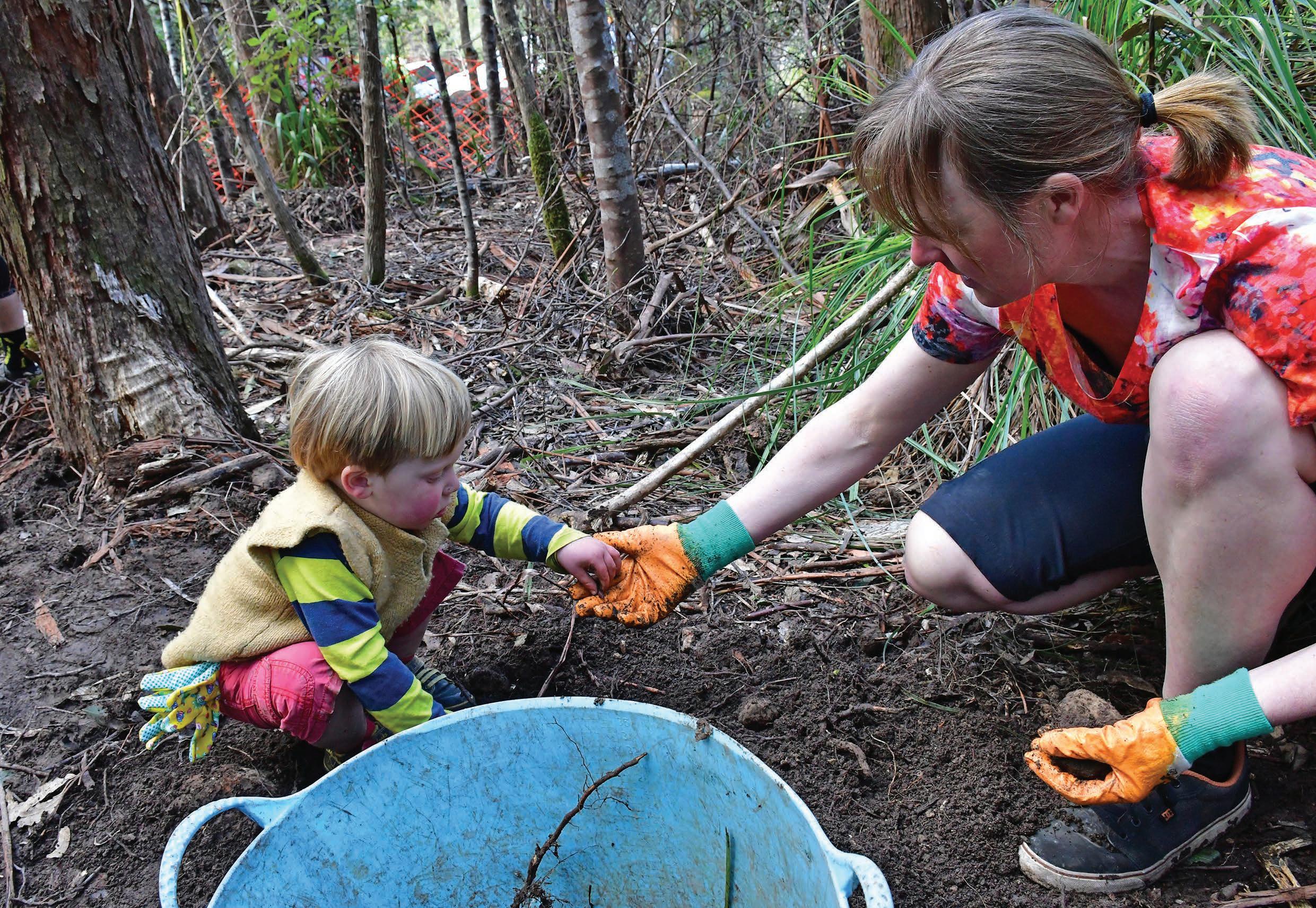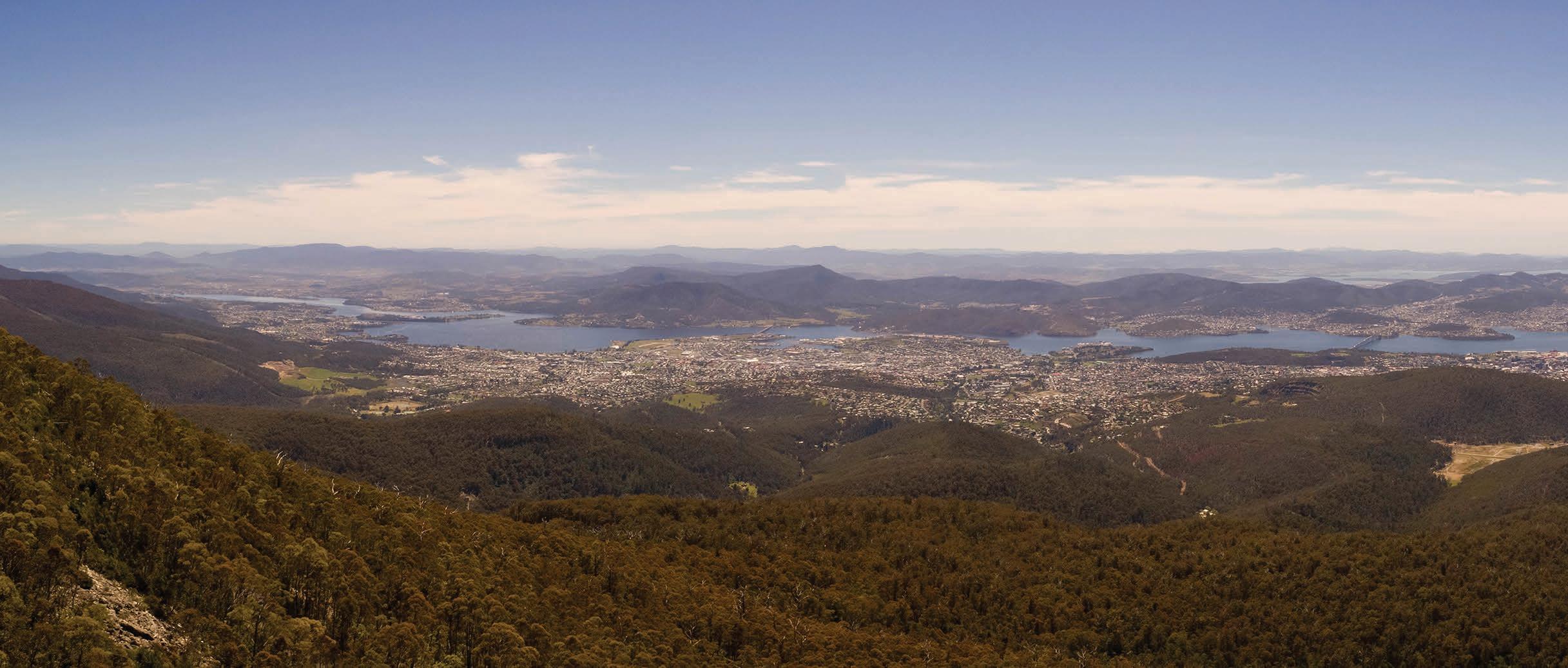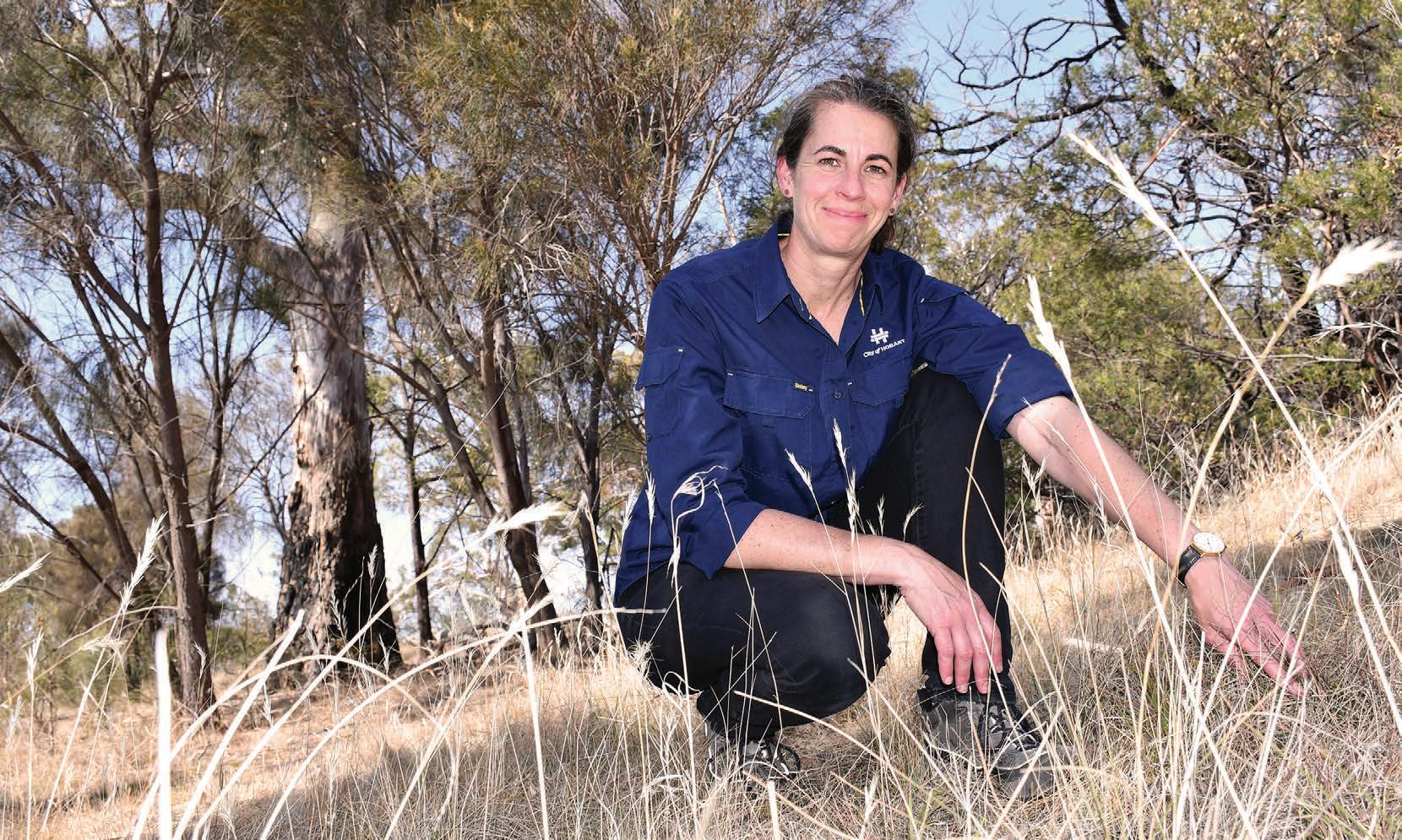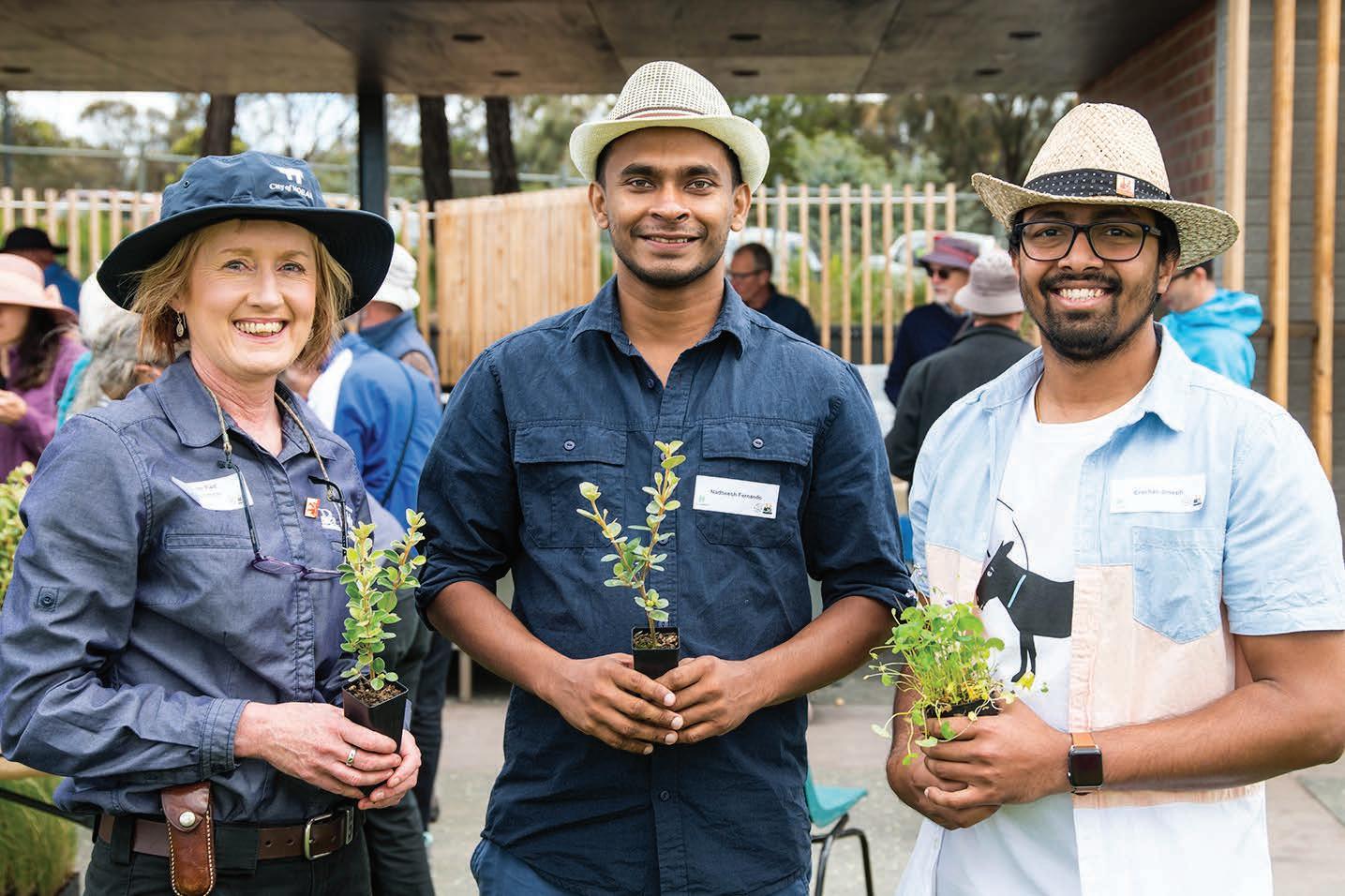Fire trails and walking tracks across Hobart’s bushland reserves were hit hard by the torrential rain in May 2018.
Healing scars from the night that shook Hobart A
lmost two years ago on an autumn night in May a line of lightning storms marched into Hobart and dropped a rain bomb on Tasmania’s capital city. Over 24 hours kunanyi / Mount Wellington received 236.2 millimetres of rain. Down in Hobart roads turned into rivers and cars floated down city streets. Swollen rivulets burst with debris, throwing rubbish, rocks, branches and logs up on to their banks. Hobart and its surrounding suburbs weren’t the only places copping a belting from the ferocious weather. Twelve hundred metres above the city, kunanyi / Mount Wellington was also in turmoil as rain pelted the mountain top and rolled down its sides, carving deep channels into fire trails, walking and mountain bike tracks. Huge boulders that a decade earlier had been carefully levered into place to form the iconic Clapper Bridge on the North-
Bandicoot Times
Hobart Rivulet was hit particularly hard by the deluge of water.
South mountain bike track were knocked around like skittles. Newly resurfaced fire trails were stripped bare. The damage to Hobart’s bushland infrastructure was immense and the task of repair huge.
Healing the wounds Since that night a massive repair and restoration operation has 4
taken place across the City’s bushland reserves. More than $1.67 million is being spent repairing approximately 40 kilometres of fire trails, walking tracks and other bushland infrastructure damaged during the storm. Most of the work has been completed and included rerouting the North-South Track river Autumn 2020 | No 76




